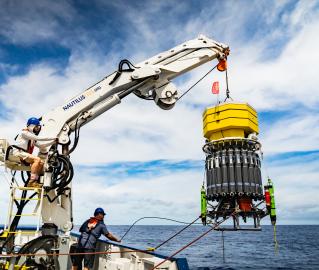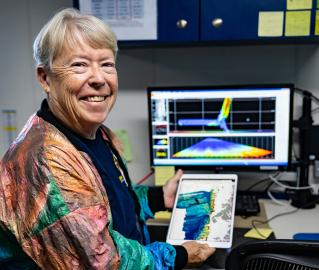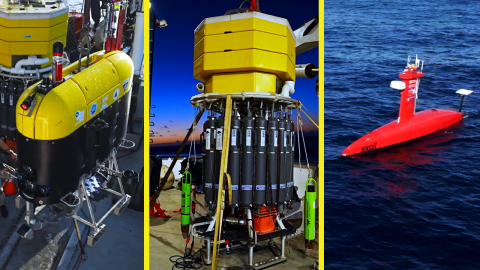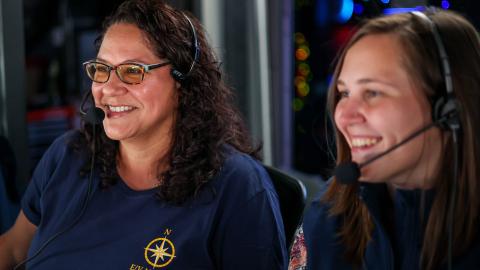DriX is Back for the 2023 Tech Collaboration Cruise
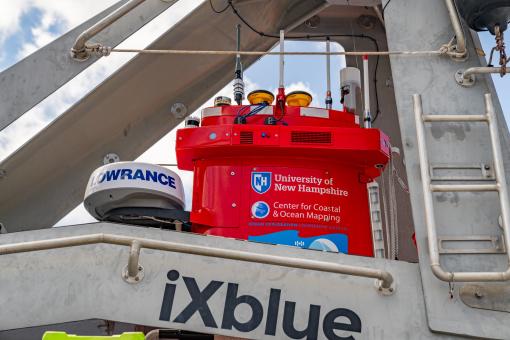
Over the last three years OET has been working with partners from Ocean Exploration Cooperative Institute (OECI) to integrate emerging exploration technologies to enhance ocean exploration. The Universtity of New Hamsphire's Center for Coastal and Ocean Mapping's Val Schmidt updated us on what's new with (USV) DriX this year.
"This has been a banner year for upgrades and improvements to DriX-8. It all started back in February and March when we spent six weeks upgrading our entire gondola to accommodate a new EM712 multi-beam sonar, replacing the previous EM2040. The EM712 operates at lower frequencies, which attenuate less in the water column, allowing the mapping system to 'see' the seafloor to much deeper depths, as much as 2000 meters or more. Maintaining the system's resolving capability requires much larger sonar arrays, necessitating an entirely new gondola for our DriX. The EM712 installed on DriX-8 had to be completely redesigned by Kongsberg for this installation - the first ever such system on an unscrewed system of this size.
"The larger gondola has the added benefit of allowing us to install a 70kHz EK-80 fisheries transducer alongside the previously existing 200kHz transducer. These are very sensitive and highly calibrated sonars used by NOAA (and many others) to quantify biomass. Again, the lower frequency allows us to penetrate deeper into the ocean, and to be sensitive to flora and fauna with different acoustic scattering characteristics. Said another way, we can acoustically 'see' things we couldn’t before.
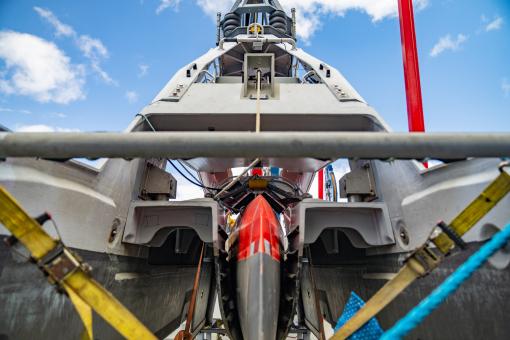
"In addition to all this, we have installed a new Starlink antenna on DriX-8, which effectively frees the DriX from any real range restriction between it and its operator. Data rates via Starlink are easily an order of magnitude larger than those through other satellite systems that we can fit on DriX, allowing us to stream all the standard data, including several video streams via satellite. While the primary operators for this cruise will be aboard Nautilus, some operations will be conducted from Durham, NH, using this new system.
"But wait, there’s more! We have installed a new direct reading fuel flow sensor in DriX-8. This will greatly aid in estimating our fuel consumption, which previously has been done only via a noisy tank level meter. Having a clear understanding of DriX fuel consumption, which changes with speed, sea state, and one’s heading with respect to them, aids operators in estimating the amount of time remaining on station and DriX's ability to steam to a weather level. These are critical capabilities for operating long-endurance, over-the-horizon operations.
"We have installed a new forward-looking camera on DriX-8. DriX-8 and some DriX vehicles have found themselves fouled on occasion by floating debris that tends to rise up over the bow because of its wave-piercing nature. So we’ve added a camera to allow us to monitor exactly where things will be likely to get caught. With some luck and some careful maneuvering, we hope to free DriX-8 before anything becomes a problem.
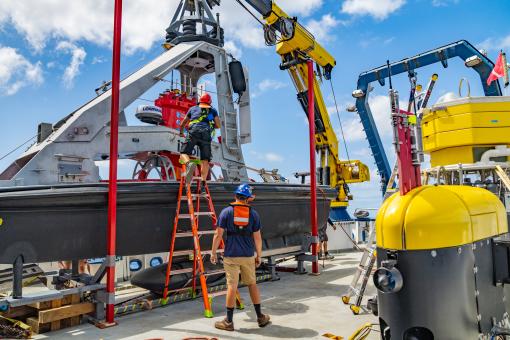
"We have also installed a new Wi-Fi system aboard DriX-8 specifically to talk to Mesobot when Mesbot is on the surface. This will allow Mesobot operators to pull data and reprogram Mesobot while at sea, many miles from the system through the DriX telemetry systems. It also helps us local Mesobot when it is on the surface, acting as a kind of beacon.
"There have been many software upgrades, big and small, by Exail (the manufacturer) to DriX-8. Many improve the ability for operators to collaborate when operating over-the-horizon from different locations, or improve the mission planning or feedback.
"In addition, our own team is putting in place new capabilities for DriX operations with an ASV like Mesobot. We’ll be rolling out and testing behaviors that will automate the tracking of Mesobot, and the collaborative sensing that DriX and Mesobot developed in last year’s mission."
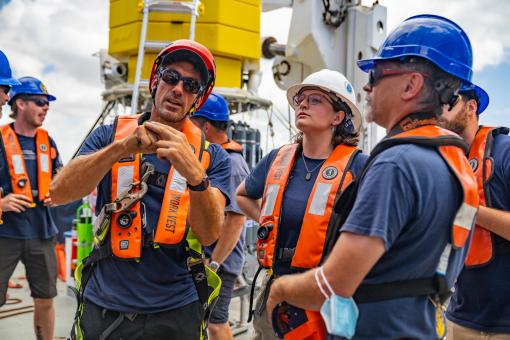
Stay tuned for more updates from the field on DriX, Mesobot, the DAP Lander, and more!
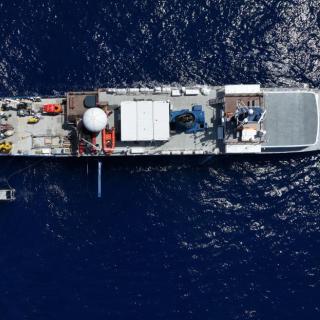
OECI Multi-vehicle Exploration
Over the last three years OET has been working with partners from Ocean Exploration Cooperative Institute (OECI) to integrate emerging exploration technologies to enhance ocean exploration.
